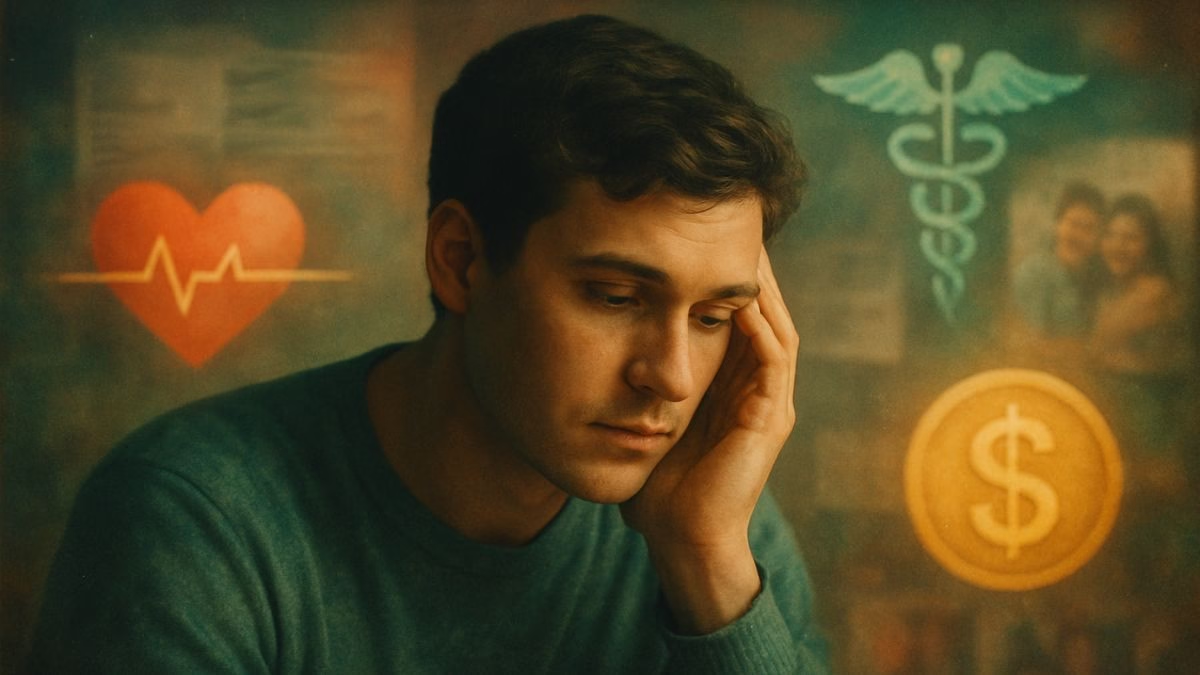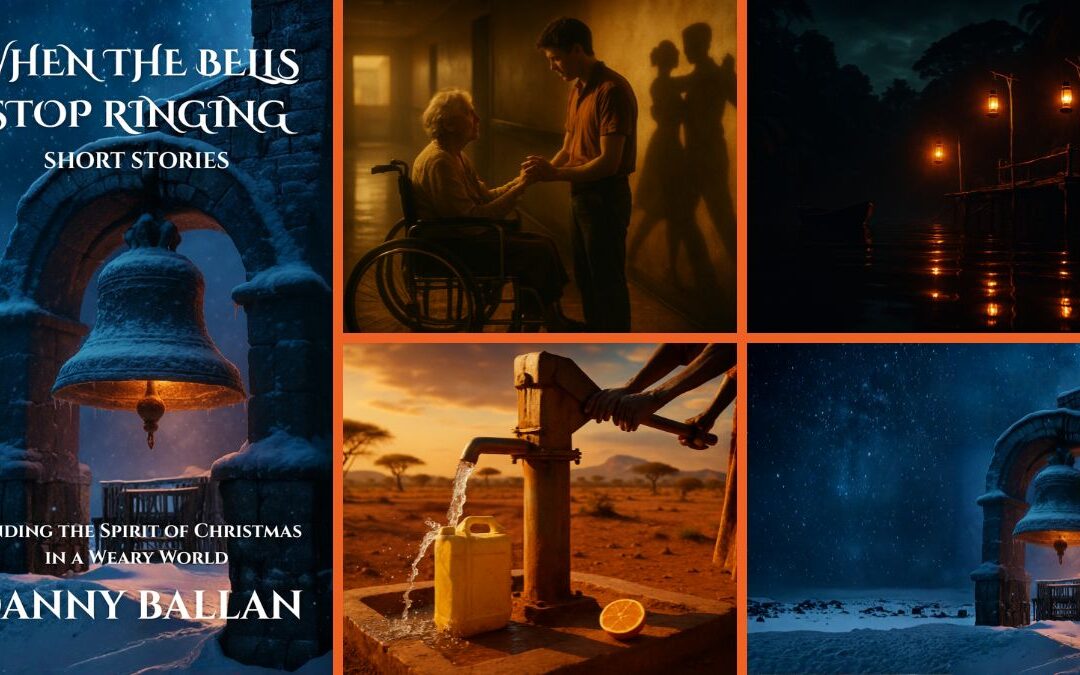The Most Important Job You’ll Ever Have
Over two thousand years ago, Socrates stood before an Athenian court and uttered a phrase that has echoed through the millennia: “The unexamined life is not worth living.” He wasn’t being dramatic. He was making a radical claim about the nature of a meaningful human existence. He was arguing that the default settings we are born with—our appetites, our inherited beliefs, our unthinking reactions—are not enough. To truly live, we must turn the full force of our intellect inward and outward. We must question.
Fast forward to today. We are not in an Athenian agora; we are in a digital maelstrom. Every single day, we are bombarded with a relentless firehose of information, all of it competing for our attention, our money, and our beliefs. A charismatic influencer on Instagram promises a new “superfood” will grant you boundless energy. A financial guru on YouTube guarantees a secret method to get rich with zero risk. A best-selling author offers a five-step, one-size-fits-all formula for achieving perpetual happiness.
In this chaotic marketplace of ideas, Socrates’s proclamation is no longer just a lofty philosophical ideal; it is a fundamental tool for survival. You are the Chief Executive Officer of your own life. You are the one ultimately responsible for the well-being of its various departments: your physical health, your financial stability, and your mental and emotional prosperity. And the single most important skill for this job—the one that determines whether the enterprise thrives or flounders—is critical thinking.
This article is about taking critical thinking out of the ivory tower and putting it to work in the trenches of your daily existence. We will explore how to become a discerning skeptic in a world of wellness fads, a rational analyst of your own financial future, and a compassionate but honest interrogator of your own mind. This is not about becoming a cynic who trusts nothing; it’s about becoming a pragmatist who invests their most precious resources—their time, their health, their money, and their hope—wisely. This is a guide to leading an examined life.
The Wellness Minefield: A Critical Thinker’s Guide to Not Juicing Everything
The modern wellness industry is a multi-trillion dollar behemoth, built largely on hope, insecurity, and a handful of buzzwords. It offers quick fixes, miracle cures, and ancient secrets, all beautifully packaged and promoted by people with perfect abs and glowing skin. Navigating this landscape without a critical thinking toolkit is like walking through a minefield blindfolded.
Correlation is Not Your Guru
One of the most seductive traps in the world of health and wellness is the confusion between correlation and causation. Correlation simply means that two things happen at the same time. Causation means that one thing makes the other thing happen. The human brain is a pattern-finding machine, and it is brilliant at seeing correlations and jumping to the conclusion of causation.
The classic example is that ice cream sales and shark attacks are highly correlated. When one goes up, the other goes up. Does this mean eating a vanilla cone summons a Great White? No. There’s a third, hidden factor: the summer heat. Hot weather makes more people buy ice cream, and it makes more people go swimming, which increases the chance of a shark encounter.
Now, apply this to the wellness world. You see an article that says, “People who drink celery juice every morning have lower rates of inflammation.” This is a correlation. A non-critical thinker hears this and immediately starts stocking up on celery. A critical thinker asks: “Wait a minute. What else might be true about people who have the time, money, and discipline to juice celery every single morning?” Perhaps they also exercise more, eat less processed food, sleep better, and have lower stress levels. The celery juice might just be a bystander to an overall healthy lifestyle. Without a proper scientific study that isolates the celery juice as the only variable, the claim is meaningless.
Deconstructing the “Miracle” Claim: A Practical Toolkit
When you encounter the next miracle diet, supplement, or wellness fad, don’t just accept or reject it outright. Run it through a critical thinking checklist.
- Follow the Money: Who is making this claim, and what do they stand to gain? Is it a scientist publishing peer-reviewed research, or is it a company selling a product? If the person telling you about the miracle cure is also selling the miracle cure, your skepticism should go into overdrive. This doesn’t automatically mean it’s false, but it’s a massive conflict of interest.
- Demand a Control Group: The gold standard of scientific evidence is the Randomized Controlled Trial (RCT). In an RCT, you take a large group of people, randomly assign half of them to get the treatment (the new supplement) and the other half to get a fake treatment, or placebo (a sugar pill). Crucially, neither the participants nor the researchers know who is getting what. This is the only way to know if the treatment’s efficacy is real or just the result of the placebo effect—the well-documented phenomenon where people feel better simply because they believe they are receiving a treatment.
- Be Wary of Anecdotes: The wellness world runs on anecdotes and testimonials. “I tried the Crystal-Chakra Diet and I’ve never felt better!” This is not evidence; it’s a story. For every person who felt better, there may be ten who felt no different and one who got sick, but you’ll never hear from them. The human body and mind are complex; people get better for all sorts of reasons, or for no reason at all. A single story, however compelling, is a data point of one.
- Look for the Weight of Evidence: Don’t be swayed by a single study. Science is a slow, cumulative process. A single study, especially if it’s small or poorly designed, can show all sorts of strange results. What you should be looking for is a scientific consensus, a meta-analysis (a study of studies), or recommendations from reputable, independent organizations. The more extraordinary the claim (“This one weird trick reverses aging!”), the more extraordinary the evidence required to support it.
By applying this simple framework, you can move from being a passive consumer of health trends to being an active, empowered evaluator of them.
Financial Fortitude: Thinking Your Way to Wealth (or at Least, Not to Ruin)
There is perhaps no area of life where our unexamined thinking can cost us more dearly than in our finances. We like to think of ourselves as rational actors, calmly weighing pros and cons before making an investment. The reality is that most of us are a bundle of emotional biases and cognitive shortcuts, making us easy prey for our own worst instincts and the financial industry that knows how to exploit them.
Your Brain’s Worst Financial Advisor: Taming Emotional Bias
Critical thinking in finance is largely a battle against your own brain. Here are a few of the key cognitive biases you need to identify and actively fight against.
- Loss Aversion: This is the big one. Psychologically, the pain of losing a dollar is about twice as powerful as the pleasure of gaining a dollar. This makes us do irrational things. We hold onto a losing stock for far too long, hoping it will “come back,” because selling it would mean crystallizing the loss, which feels terrible. A critical thinker acknowledges the feeling but forces themselves to ask the rational question: “If I had this money in cash today, would I buy this stock? If the answer is no, then I should sell it, regardless of what I paid for it.”
- Herd Mentality: Humans are social creatures. We feel safe in a crowd. When we see everyone else rushing to buy a hot new cryptocurrency or a trendy stock, our fear of missing out (FOMO) goes into overdrive. We pile in, often at the peak of the bubble. The critical thinker deliberately steps back from the herd and asks, “Is this asset going up because its fundamental value has increased, or simply because a frenzy of buying is pushing up the price? What happens when the herd decides to run in the other direction?”
- Confirmation Bias: This is our tendency to seek out and favor information that confirms what we already believe. If you’ve decided a certain company is a great investment, you will subconsciously click on all the positive news articles about it and dismiss the negative ones as “noise.” A critical thinker actively fights this. They make a habit of seeking out the smartest, most well-reasoned argument against their own position. This is called building “the other side of the case,” and it’s the single best way to see the flaws in your own thinking before they cost you a fortune.
The Power of the “Second-Order Question”
One of the most powerful tools for financial critical thinking is learning to distinguish between first-order and second-order thinking.
- First-order thinking is simplistic and superficial. It looks for the immediate, obvious consequence. “The company reported great earnings, the stock will go up.” “The economy is in a recession, I should sell everything.”
- Second-order thinking is deeper and more complex. It asks, “And then what?” It thinks in terms of interactions and consequences over time.
- First-order: “The company reported great earnings, so the stock will go up.”
- Second-order: “The company reported great earnings, but everyone expected them to. Is that great news already priced into the stock? Might the stock actually fall because the earnings weren’t even better than the lofty expectations? What are the chances that this is ‘peak earnings’ and things will get tougher from here?”
This kind of thinking requires you to consider the full range of possible outcomes, to think about what the consensus view is, and to consider what might happen if the consensus is wrong. It is the difference between playing checkers and playing chess. It is difficult and requires deliberate effort, which is why so few people do it. And that is precisely why it offers such a significant advantage.
The Architecture of a Happy Life: Questioning Your Own Blueprints
We’ve applied critical thinking to our bodies and our bank accounts. Now we turn to the most complex and intimate subject of all: ourselves. We all operate on a set of deeply ingrained, often invisible, blueprints for what constitutes a “good life.” These blueprints dictate our ideas about success, love, failure, and happiness. But who drew them? And are they still serving us?
De-Bugging Your Mental Software: Identifying Your Core Assumptions
Much of our behavior is driven by tacit assumptions—beliefs we hold to be true without ever having consciously chosen them. These are the “software” that runs in the background of our minds. They are often absorbed from our family, our culture, and our society.
- “To be successful, I must have a prestigious job title.”
- “If I’m not in a romantic relationship, I am incomplete.”
- “Rest is a sign of laziness; I must always be productive.”
- “Conflict is bad and should always be avoided.”
These are not universal truths; they are just ideas. And they may be the source of a great deal of our anxiety and unhappiness. The first step of a truly examined life is to bring these assumptions out of the shadows and into the light. A powerful technique for this is the “5 Whys,” a method originally developed for industrial manufacturing but perfectly suited for introspection.
Start with a recurring negative feeling. For example: “I feel incredibly anxious when I’m not working.”
- Why? “Because I feel like I’m wasting time.”
- Why is that a problem? “Because I feel like I’m falling behind.”
- Why do you feel like you’re falling behind? “Because I believe I need to be constantly productive to be a worthy person.”
- Why do you believe that? “Because I learned from my family that your value is tied to your output and achievements.”
- Why must that be true? “…I guess it doesn’t have to be. It’s just a belief I’ve never questioned.”
In just five steps, you’ve moved from a surface-level feeling to a deep-seated, unexamined core belief. Once that belief is exposed, you can begin to question it. Is it really true? Does it serve you? Could a different belief—like “My worth is inherent, and rest is essential for my well-being”—lead to a happier, more sustainable life?
The Socratic Mirror: The Art of Productive Self-Reflection
The practice of examining your own life is not about harsh self-criticism or aimless navel-gazing. It’s about engaging in a structured, compassionate dialogue with yourself. This is where practices like journaling come in, but not just as a diary of events. A critical thinking journal is a tool for Socratic self-interrogation.
Instead of just writing about your day, use specific prompts to guide your reflection:
- What was my biggest assumption today? How did it affect my actions?
- When did I act out of emotion rather than reason? What was the outcome?
- What is one thing I believe to be true that I could be wrong about?
- If I were advising a friend in my exact situation, what would I tell them? (This is a great way to gain objective distance.)
- What is the “story” I’m telling myself about this situation? Is there another, equally valid story I could tell?
This process isn’t about finding perfect, final answers. It’s about cultivating a habit of mind. It’s about becoming a more curious, honest, and intentional architect of your own thoughts, feelings, and actions. It is the ongoing, challenging, and deeply rewarding work of leading an examined life.
The Liberated Mind
Critical thinking is not a magic wand that will solve all of your problems. Applying it to your life will not grant you immortality, effortless wealth, or a permanent state of bliss. Its promise is something far more profound and durable: sovereignty.
By thinking critically about the health advice you consume, you free yourself from the tyranny of fads and the exploitation of false hope. By thinking critically about your finances, you free yourself from the grip of emotional biases that lead to ruinous decisions. And by thinking critically about your own beliefs and assumptions, you free yourself from the inherited scripts and invisible cages that can limit your potential for growth and happiness.
The unexamined life is one lived on autopilot, guided by the whims of the market, the pressures of the crowd, and the unthinking habits of the past. The examined life is one lived with intention. It is a life where you are the one holding the compass, asking the questions, and, ultimately, choosing the path. It is more difficult, it requires more effort, but as Socrates knew all those years ago, it’s the only one truly worth living.
Focus on Language
Vocabulary and Speaking
Let’s zoom in and get our hands on the raw materials of the ideas we’ve been discussing: the words themselves. Using precise language allows you to think more clearly and express your thoughts more powerfully. It’s not about using big words to sound smart; it’s about using the right words to be understood exactly as you intend. We’re going to walk through ten words and phrases from the article, getting a real feel for their texture, their meaning, and how you can start weaving them into your everyday conversations. First up is a word from the health section: panacea. I warned against treatments that are presented as a panacea for all health problems. A panacea is a solution or remedy for all difficulties or diseases. It’s a “cure-all.” The word comes from the name of the Greek goddess of universal remedy, Panakeia. When you hear this word, you should immediately be skeptical, because in the real world, panaceas don’t exist. If someone tells you that meditation is a panacea for all of life’s problems, a critical thinker would respond, “While meditation has many benefits, it’s probably not a panacea.” You can use it outside of health, too. For instance, “The new CEO warned that the proposed restructuring was not a panacea for the company’s deep-seated cultural issues.” It’s a perfect word to describe an overly simplistic, cure-all solution.
A related concept is the reliance on anecdotal evidence. The article advised being wary of anecdotal claims in the wellness world. Anecdotal means based on personal accounts rather than facts or research. It’s evidence in the form of a story. “My grandfather smoked a pack a day and lived to be 95” is a classic piece of anecdotal evidence against the dangers of smoking. It might be true, but it’s not statistically significant. It’s an anecdote, not data. This is a crucial concept in our information-saturated world. When a friend recommends a restaurant, their advice is anecdotal. When you read 500 online reviews, you’re moving closer to data. You can use this word to gently challenge someone’s reasoning. “That’s an interesting story, but it sounds a bit anecdotal. Is there any broader evidence to support that claim?” It’s a polite way of saying, “A single story isn’t enough to convince me.”
Now, let’s talk about what happens when our beliefs clash with evidence. This is called cognitive dissonance. While not explicitly in the main text, it’s the psychological engine behind why we resist changing our minds. Cognitive dissonance is the state of having inconsistent thoughts, beliefs, or attitudes, especially as relating to behavioral decisions and attitude change. It’s that uncomfortable mental stress you feel when you hold two contradictory ideas at once. For example, if you believe you are a kind person, but you then do something unkind, you experience cognitive dissonance. To resolve it, you might either change your behavior (apologize and be kinder) or change your belief (“Well, they deserved it, so it wasn’t actually unkind.”). In finance, someone who believes they are a smart investor but is holding a stock that has lost 90% of its value is in a state of cognitive dissonance. It’s a fundamental concept for understanding why the examined life can be so difficult.
When we’re looking at a solution or a treatment, what we’re really interested in is its efficacy. I mentioned checking the efficacy of a new supplement. Efficacy is the ability to produce a desired or intended result. It’s a more formal and scientific word for “effectiveness.” Scientists study the efficacy of new drugs. A company might test the efficacy of a new advertising campaign. It’s all about whether something actually works under controlled conditions. You could ask, “What is the proven efficacy of this learning method compared to others?” It signals that you’re not just asking if it “feels” good, but if it produces measurable results.
Let’s look at a word with a sinister feel: pernicious. A pernicious idea is one that has a harmful effect, especially in a gradual or subtle way. The belief that “rest is for the weak” is a pernicious idea. It doesn’t seem harmful on the surface—it even sounds motivating—but over time, it can lead to burnout, anxiety, and serious health problems. Misinformation is pernicious because it slowly erodes trust and social cohesion. It’s a great word for describing things that are not just wrong, but dangerously and subtly harmful. You might say, “The pernicious myth that you have to be a ‘starving artist’ to be creative has probably stopped countless people from pursuing their passion in a sustainable way.”
On the more positive side, we have the word pragmatic. The article encourages a pragmatic approach to life’s problems. To be pragmatic is to deal with things sensibly and realistically in a way that is based on practical rather than theoretical considerations. A pragmatic person is less concerned with ideology and more concerned with “what works.” If your car breaks down, the theoretical approach is to understand the physics of the internal combustion engine. The pragmatic approach is to call a tow truck. In a meeting, when everyone is debating abstract ideas, the pragmatic person is the one who says, “This is all interesting, but what can we actually accomplish by Friday?” It’s a highly valued trait. You could describe a leader as “a pragmatic problem-solver who doesn’t get caught up in office politics.”
The process of self-examination is called introspection. The article recommends using the “5 Whys” as a tool for introspection. Introspection is the examination or observation of one’s own mental and emotional processes. It’s looking inward. It’s the opposite of extrospection, which is looking at the outside world. Journaling can be a form of introspection. Quietly thinking about why you reacted a certain way is introspection. It’s a key component of self-awareness and emotional intelligence. You might say, “After a period of introspection, I realized my fear of public speaking wasn’t about the audience, but about my own perfectionism.”
A word that underpins the entire scientific approach to health is empirical. We should look for empirical evidence, not just anecdotes. Empirical means based on, concerned with, or verifiable by observation or experience rather than theory or pure logic. It’s knowledge that comes from the real, measurable world. The claim that an apple falls from a tree is an empirical one; you can see it happen. The claim that it falls because of gravity is a theory that explains the empirical observation. When making a decision, you should look for empirical support. “Our belief is that customers want a simpler interface, but we need to do some user testing to get empirical data to support that.”
Now for a word that is essential for a critical thinker’s vocabulary: fallacy. A fallacy is a mistaken belief, especially one based on an unsound argument. It’s a flaw in reasoning. The idea that correlation equals causation is a logical fallacy. The “appeal to tradition” fallacy is the flawed argument that we should keep doing something just because we’ve always done it. Identifying fallacies in other people’s arguments—and your own—is a core skill of critical thinking. There are dozens of named fallacies. You could point one out in a discussion by saying, “That sounds like a ‘slippery slope’ fallacy; I don’t think we can assume that this one small change will inevitably lead to that catastrophic outcome.”
Finally, let’s look at the word tacit. The article talks about our “tacit assumptions.” Tacit means understood or implied without being stated. Tacit knowledge is the kind of knowledge that’s difficult to transfer to another person by writing it down or verbalizing it. It’s the intuitive understanding an expert has. A tacit agreement is one that isn’t spoken aloud but is clear to everyone involved. Our most powerful assumptions are often tacit. We just live by them without ever stating them. For example, in many workplaces, there’s a tacit rule that you shouldn’t leave before your boss does. No one says it, but everyone understands it. Bringing a tacit assumption to the surface is the first step in examining it. “Let’s discuss the tacit assumption here: are we all agreeing that we have to sacrifice our weekends to get this done?”
There they are. Ten powerful words to help you think and communicate with greater clarity. Now, let’s put them into action.
Our speaking skill for today is playing the devil’s advocate constructively. A “devil’s advocate” is someone who takes a position they don’t necessarily agree with, just for the sake of argument. In a team setting, this is an incredibly valuable role. It helps uncover weaknesses in a plan before it’s too late. But there’s a trick to it. You have to do it without sounding negative or obstructionist. The goal is to stress-test the idea, not to attack the person who proposed it.
A simple framework is: Praise + Probe + Propose.
- Praise: Start by acknowledging the merit in the idea. This shows you’re listening and being open-minded. “I really like the energy behind this idea, and I agree that we need to be bold.”
- Probe: Ask a tough “what if” question to explore a potential weakness. This is where you play the devil’s advocate. “To play devil’s advocate for a moment, what if our empirical data is wrong? The efficacy of this strategy depends entirely on our assumption that the market will react in a certain way. What if a competitor makes a move we haven’t anticipated? Are we relying on a potential fallacy here?”
- Propose: Suggest a way to mitigate that risk. This shows you’re a constructive team player, not just a critic. “Perhaps we could run a small-scale pilot program first. That would be a pragmatic way to test our assumptions before we commit the full budget.”
Here is your speaking challenge. Imagine you’re in a meeting and a colleague passionately proposes a new project. The team seems to be swept up in the excitement. You, however, have some reservations. The project seems like a potential panacea, based on some compelling but anecdotal reports. Your assignment is to formulate a response using the “Praise + Probe + Propose” framework. Your goal is to gently introduce skepticism and encourage a more critical evaluation. You must use at least three of our vocabulary words: panacea, anecdotal, cognitive dissonance, efficacy, pernicious, pragmatic, introspection, empirical, fallacy, tacit. Record yourself saying it. Do you sound like a helpful co-pilot, or a roadblock? Mastering this skill will make you one of the most valuable thinkers in any room.
Grammar and Writing
Let’s transition that skill of structured thinking into the written word. One of the most powerful forms of writing is the personal essay, where you take a universal theme and explore it through the lens of your own experience. It’s a perfect medium for practicing the kind of introspection we’ve been discussing.
The Writing Challenge:
Write a personal reflective essay (500-700 words) about a time you fundamentally changed your mind about an important personal belief. This could be a belief about a health practice you once swore by, a financial strategy you followed, a career goal you pursued, or a core tenet of your personal philosophy. The essay should not just state that you changed your mind; it should deconstruct the process of that change. Your goal is to explore the anatomy of your own evolving perspective.
This is a challenging but deeply rewarding writing exercise. Let’s break down the grammatical and structural tools you’ll need to write a powerful, insightful essay.
Tip 1: Structure Your Essay as a Journey of Discovery
A good reflective essay has a narrative arc. It’s not just a collection of thoughts; it’s a story of transformation.
- The Hook (Introduction): Start with a vivid anecdote or a powerful statement that establishes your old belief. Plunge the reader directly into your past mindset. “For the first decade of my adult life, I operated under the tacit assumption that ‘hustle’ was a synonym for ‘worth.’ Sleep was a necessary evil, and relaxation was a sign that I wasn’t trying hard enough.”
- The Catalyst (Rising Action): Describe the event, experience, or piece of information that first planted a seed of doubt. This is the inciting incident that begins to create cognitive dissonance. “It wasn’t a single, dramatic event, but a slow, pernicious accumulation of evidence to the contrary: recurring illnesses, a frayed temper, and the pragmatic realization that my most creative ideas came not in the frenzy of work, but in the quiet moments I had begun to resent.”
- The Turning Point (Climax): This is the core of your essay. Detail the struggle of changing your mind. It’s rarely a clean, logical process. Describe the internal conflict, the resistance to the new idea, and the moment when the new perspective finally took hold. This is where you show, not just tell, your critical thinking in action.
- The New Perspective (Falling Action & Resolution): Explain your new belief and how it has changed your life, your actions, or your feelings. Conclude with a broader reflection on the experience of changing your mind itself. What did you learn from the process?
Grammar Focus: Past Modals and Verbs of Contemplation
Reflective writing lives in the past, but it’s not just about stating what happened. It’s about exploring what could have happened, what you used to believe, and what you should have known. This is where past tense modals and verbs of contemplation become your most powerful tools.
- Used to / Would: For describing past habits and beliefs.
- “I used to believe that every problem had a pragmatic, one-size-fits-all solution.”
- “Every Sunday, I would meticulously plan my week, convinced that I could control every outcome.”
- Could have / Might have: For exploring past possibilities.
- “If I hadn’t read that book, I might have continued down that same path for years.”
- “I realized that my old belief system could have been the very thing holding me back.”
- Should have / Shouldn’t have: For reflecting on past mistakes or realizations (use with care to avoid sounding overly regretful).
- “I see now that I should have listened to my own intuition more.”
Combine these with verbs of contemplation to show your mental process: I realized, I discovered, I began to question, I came to understand, I started to wonder if…
Example: “I used to think that financial security was a panacea for anxiety. I might have continued to believe that, but then I reached my savings goal and discovered the anxiety was still there. That’s when I began to question my tacit assumption. I realized that I should have been focusing on my internal state all along.”
Tip 2: Use Metaphor and Simile to Make the Internal Visible
The inner world of thought and emotion can be abstract and hard to describe. Metaphors and similes are your best tools for making these internal processes concrete and relatable for the reader.
- Instead of: “I was very confused.”
- Try: “My mind felt like a shaken snow globe, with all my old beliefs swirling chaotically.”
- Instead of: “It was hard to change my belief.”
- Try: “Letting go of that belief was like trying to remove a foundational brick from a wall; my entire mental structure felt unstable.”
A well-placed metaphor can do more work than an entire paragraph of explanation. It’s a key feature of rich, engaging non-fiction writing.
Grammar Focus: Subordinate Clauses of Concession
Changing your mind is a complex, non-linear process. You need grammatical structures that can hold two opposing ideas at once. Clauses of concession, which typically begin with although, even though, while, or despite, are perfect for this. They allow you to acknowledge the pull of your old belief while explaining why you moved away from it.
- “Although a part of me desperately wanted to believe the simple, anecdotal success stories, the empirical evidence was becoming impossible to ignore.”
- “Even though the new path was filled with uncertainty, it felt more authentic than the one I had been on.”
- “While my old approach gave me a sense of control, I came to see that it was a pernicious illusion.”
Using these structures adds sophistication and psychological realism to your writing. It shows that you understand the nuance and difficulty of genuine introspection.
Your writing challenge is a chance to put all of this together. Tell the story of your own evolving mind. Use the narrative journey structure, bring the past to life with past modals and verbs of contemplation, make the internal world visible with metaphors, and capture the complexity of the struggle with clauses of concession. This isn’t just a grammar exercise; it’s a profound act of critical thinking itself.
Let’s Discuss
- The Analyst’s Paradox: The article champions a deeply analytical and skeptical approach to life’s big decisions. Is there a danger that this level of critical thinking can lead to “analysis paralysis,” where we overthink every choice and become afraid to take risks? In what areas of life—like creativity, relationships, or spirituality—might intuition and letting go of control be more valuable than a rational, critical breakdown?
- The Limits of Self-Examination: The article presents introspection and questioning one’s own assumptions as a path to growth. Can this process have a dark side? Is it possible for self-reflection to curdle into obsessive rumination or harsh self-criticism, actually worsening one’s mental well-being? What is the difference between productive self-examination and unhealthy navel-gazing?
- The “Good Enough” Life: The idea of “The Examined Life” sets a very high bar for self-awareness and intentionality. Is this a realistic or even desirable standard for everyone? Is there a virtue in a simpler, less examined life, where one finds contentment in tradition, community beliefs, and not questioning everything? Does the constant drive for self-optimization create its own kind of stress and anxiety?
- Financial Rationality vs. Human Values: The article advises taming emotional bias in financial decisions. But are all “emotional” decisions irrational? For example, choosing to support a local business even if it’s slightly more expensive, investing in an ethical fund that might have lower returns, or helping a family member financially. Are these simply biases to be overcome, or are they legitimate expressions of values that transcend pure financial optimization?
- Who is a Credible Health “Expert”? We are told to trust experts over influencers. But in recent years, trust in traditional medical institutions has eroded for various reasons. At the same time, many people have found genuine help from alternative practitioners or online communities when conventional medicine failed them. How does a critical thinker navigate a world where the lines of expertise are blurring and official sources can sometimes be wrong?
- The Placebo Effect: The article frames the placebo effect as something that obscures the “real” efficacy of a treatment. But if a person genuinely feels better from a placebo, isn’t that a positive outcome? Should we dismiss a practice if its benefits are “only” due to the placebo effect, or should we be trying to understand how to better harness this powerful mind-body connection?
- The Assumption of Agency: The entire article is built on the premise that we are the “CEOs of our own lives,” with the power to make better choices through better thinking. How much of our health, financial success, and happiness is truly within our individual control, and how much is determined by systemic factors like genetics, socioeconomic background, systemic inequality, and sheer luck? Can an overemphasis on individual critical thinking make us less compassionate towards those whose circumstances are more constrained?
- Changing Other People’s Minds: This article is a toolkit for changing your own mind. But what is our responsibility when we see a friend or family member falling for a pernicious health fad or a risky financial scheme? How can we apply the principles of critical thinking to a conversation with them without sounding arrogant, preachy, or damaging the relationship?
Critical Analysis
The article, “The Examined Life,” provides a powerful and practical framework for applying critical thinking to the core domains of an individual’s life. It successfully translates abstract concepts into actionable toolkits. However, an expert analysis reveals that the piece, in its admirable focus on individual empowerment, largely sidesteps some of the more complex systemic and psychological realities that complicate this neat picture.
First, the article is built on a foundation of profound individualism and agency, which may not reflect the lived experience of many. The metaphor of being the “CEO of your own life” is empowering, but it implicitly downplays the massive external forces that shape our choices. When discussing health, it focuses on evaluating wellness fads but doesn’t grapple with the systemic issues of healthcare access, food deserts, or the crushing stress of poverty that are far greater determinants of health outcomes than whether one drinks celery juice. Similarly, in finance, while taming cognitive biases is crucial, it’s an incomplete picture without acknowledging the realities of stagnant wages, predatory lending, and systemic inequality that make financial stability an impossible dream for many, regardless of how rationally they think. The article risks presenting systemic problems as individual thinking errors.
Second, the portrayal of changing one’s mind is a bit too rational and bloodless. It frames the process as one of identifying a core assumption, weighing the evidence, and logically choosing a new path. This overlooks the deeply emotional, social, and identity-based nature of our beliefs. We don’t hold beliefs in a vacuum; they are often the price of admission to our communities and a core part of how we see ourselves. To abandon a belief—whether it’s a dietary dogma shared by your friend group or a political ideology inherited from your family—can feel like an act of betrayal. The article doesn’t fully account for the intense cognitive dissonance and social friction this entails, which is why people will cling to demonstrably false beliefs with such tenacity. The battle is rarely just facts versus fallacy; it’s identity versus anxiety.
Third, there’s a missed opportunity to discuss the paradox of choice and the problem of “overthinking.” The article sets up a dichotomy between the unexamined life (bad) and the examined life (good). But there is a potential pitfall in the examined life: analysis paralysis and the anxiety that comes from the pressure to “optimize” everything. For some, a constant state of self-interrogation and skepticism can be exhausting and counterproductive. There is a wisdom in intuition, in accepting “good enough,” and in trusting heuristics (mental shortcuts) that have served us well. A more nuanced analysis would explore the meta-skill of knowing when to engage in deep critical analysis versus when to trust a gut feeling or simply let go. The article doesn’t provide an “off-ramp” for the thinking process, which can be just as important as the “on-ramp.”
Finally, the article could have benefited from a more explicit discussion of intellectual humility. While it encourages questioning and skepticism, it doesn’t spend enough time on the other side of that coin: knowing the limits of your own knowledge and when to defer to genuine expertise. In a world where “do your own research” has become a rallying cry for conspiracy theorists, it’s crucial to distinguish between healthy skepticism and the arrogant dismissal of scientific consensus. The “examined life” must also include an honest examination of our own blind spots and the recognition that we cannot be experts in everything. True critical thinking involves not just deconstructing claims, but also knowing how to identify and trust credible sources, a skill that is perhaps more critical than ever.
In essence, while the article provides an excellent “how-to” guide for individual critical thinking, a deeper critique reveals that a truly examined life also requires an examination of the systems we live in, the emotional ties that bind us to our beliefs, and the wisdom to know when to stop analyzing and simply live.










0 Comments